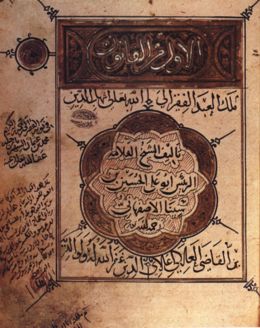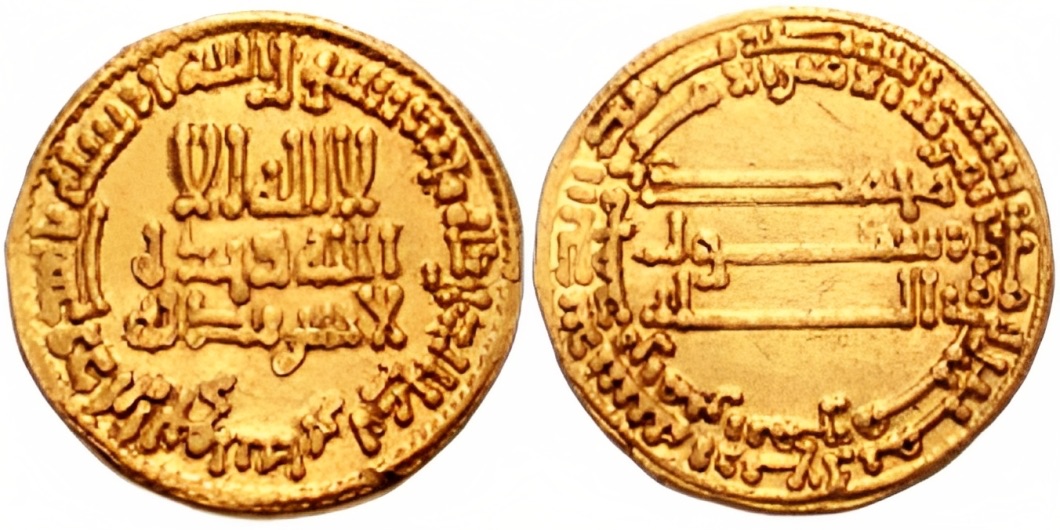|
Kisa'i
Al-Kisā’ī () Abū al-Ḥasan ‘Alī ibn Ḥamzah ibn ‘Abd Allāh ibn ‘Uthman (), called Bahman ibn Fīrūz (), surnamed Abū ‘Abd Allāh (), and Abū al-Ḥasan ‘Alī ibn Hamzah of al-Kūfah ( d. ca. 804 or 812) was preceptor to the sons of caliph Hārūn al-Rashīd and one of the ‘Seven Readers’ (seven canonical Qira'at) or ‘authorized’ Qur’ānic reader.Muhammad Ghoniem and MSM SaifullahThe Ten Readers & Their Transmitters (c) Islamic Awareness. Updated January 8, 2002; accessed April 11, 2016. He founded the Kufi school of Arabic grammar, the rival philology school to the Basri school founded by Sibawayh. Life A Persian native of al-Kūfah, he learned grammar from al-Ru’āsī and a group of other scholars. It is said that al-Kisā’ī took this moniker from the particular kind of mantle he wore called a kisā’. Al-Kisā’ī entered the court of the Abbāsid caliph Hārūn al-Rashīd at Baghdād as tutor to the two princes, al-Ma’mūn and ... [...More Info...] [...Related Items...] OR: [Wikipedia] [Google] [Baidu] |
Sibawayh
Sibawayh ( ar, سِيبَوَيْهِ ' or ; fa, سِیبُویه ' ; c. 760–796), whose full name is Abu Bishr Amr ibn Uthman ibn Qanbar al-Basri (, '), was a Persian leading grammarian of Basra and author of the earliest book on Arabic grammar. His famous unnamed work, referred to as ''Al-Kitāb'', or "The Book", is a five-volume seminal discussion of the Arabic language. Ibn Qutaybah, the earliest extant source, in his biographical entry under ''Sibawayh'' simply wrote: He is Amr ibn Uthman, and he was mainly a grammarian. He arrived in Baghdad, fell out with the local grammarians, was humiliated and went back to some town in Persia, and died there while still a young man. The tenth-century biographers Ibn al-Nadim and Abu Bakr al-Zubaydi, and in the 13th-century Ibn Khallikan, attribute Sibawayh with contributions to the science of the Arabic language and linguistics that were unsurpassed by those of earlier and later times. He has been called the greatest of all A ... [...More Info...] [...Related Items...] OR: [Wikipedia] [Google] [Baidu] |
Harun Al-Rashid
Abu Ja'far Harun ibn Muhammad al-Mahdi ( ar , أبو جعفر هارون ابن محمد المهدي) or Harun ibn al-Mahdi (; or 766 – 24 March 809), famously known as Harun al-Rashid ( ar, هَارُون الرَشِيد, translit=Hārūn al-Rashīd) was the fifth Abbasid caliph of the Abbasid Caliphate, reigning from September 786 until his death. His reign is traditionally regarded to be the beginning of the Islamic Golden Age. His epithet "al-Rashid" translates to "the Orthodox", "the Just", "the Upright", or "the Rightly-Guided". Harun established the legendary library Bayt al-Hikma ("House of Wisdom") in Baghdad in present-day Iraq, and during his rule Baghdad began to flourish as a world center of knowledge, culture and trade. During his rule, the family of Barmakids, which played a deciding role in establishing the Abbasid Caliphate, declined gradually. In 796, he moved his court and government to Raqqa in present-day Syria. A Frankish mission came to offer H ... [...More Info...] [...Related Items...] OR: [Wikipedia] [Google] [Baidu] |
Qira'at
In Islam, ''Qirāah'', (pl. ''Qirāāt''; ar, قراءات , lit= recitations or readings) are different linguistic, lexical, phonetic, morphological and syntactical forms permitted with reciting the holy book of Islam, the Quran. Differences between ''Qiraat'' are slight and include varying rules regarding the prolongation, intonation, and pronunciation of words, but also differences in stops, vowels, consonants (leading to different pronouns and verb forms), and less frequently entire words. Qiraʼat also refers to the branch of Islamic studies that deals with these modes of recitation. There are ten different recognised schools of ''qiraat'', each one deriving its name from a noted Quran reciter or "reader" (''qāriʾ'' pl. ''qāriʾūn'' or ''qurr'aʿ''), such as Nafi‘ al-Madani, Ibn Kathir al-Makki, Abu Amr of Basra, Ibn Amir ad-Dimashqi, Aasim ibn Abi al-Najud, Hamzah az-Zaiyyat, Al-Kisa'i. While these readers lived in the second and third century of Islam, the s ... [...More Info...] [...Related Items...] OR: [Wikipedia] [Google] [Baidu] |
Al-Farra’
Al-Farrā (), he was Abū Zakarīyā Yaḥyā ibn Ziyād ibn Abd Allāh ibn Manṣūr al-Daylamī al-Farrā (), was a Daylamites, Daylamite scholar and the principal pupil of Al-Kisa'i, al-Kisā’ī (). He is the most brilliant of the Grammarians of Kufa, Kūfan scholars. Muḥammad ibn Al-Jahm quotes Quṭrub the Grammarian, Ibn al-Quṭrub that it was al-Farrā’s melodic eloquence and knowledge of the pure spoken Arabic of the Bedouins and their expressions that won him special favour at the court of Harun al-Rashid, Hārūn al-Rashīd. He died on the way to Mecca, aged about sixty, or sixty-seven, in 822 (207 AH). Life Abū Zakarīyah ibn Ziyād al-Farrā’ was born in Kufa, al-Kūfah into a family of Iranian peoples, Iranian Daylamī origin. He was a mawla (client, or, apprentice) of the Banū Minqar (), although Salamah ibn ‘Āṣim said he was called al-‘Absī (), i.e. of the Banu Abs, Banū Abs. Abū ‘Abd Allāh ibn Muqlah () claimed Al-Yūsufī called him Y ... [...More Info...] [...Related Items...] OR: [Wikipedia] [Google] [Baidu] |
Al-Ma'mun
Abu al-Abbas Abdallah ibn Harun al-Rashid ( ar, أبو العباس عبد الله بن هارون الرشيد, Abū al-ʿAbbās ʿAbd Allāh ibn Hārūn ar-Rashīd; 14 September 786 – 9 August 833), better known by his regnal name Al-Ma'mun ( ar, المأمون, al-Maʾmūn), was the seventh Abbasid caliph, who reigned from 813 until his death in 833. He succeeded his half-brother al-Amin after a civil war, during which the cohesion of the Abbasid Caliphate was weakened by rebellions and the rise of local strongmen; much of his domestic reign was consumed in pacification campaigns. Well educated and with a considerable interest in scholarship, al-Ma'mun promoted the Translation Movement, the flowering of learning and the sciences in Baghdad, and the publishing of al-Khwarizmi's book now known as "Algebra". He is also known for supporting the doctrine of Mu'tazilism and for imprisoning Imam Ahmad ibn Hanbal, the rise of religious persecution ('' mihna''), and for the resum ... [...More Info...] [...Related Items...] OR: [Wikipedia] [Google] [Baidu] |
Ibn Amir Ad-Dimashqi
‘Abdullah Ibn ‘Amir Ibn Yazid Ibn Tamim Ibn Rabi‘ah al-Yahsibi, better known as Ibn Amir (118 AH - 736 CE),Muhammad Ghoniem and MSM Saifullah (c) Islamic Awareness. Updated January 8, 2002; accessed April 11, 2016.Shady Hekmat NasserIbn Mujahid and the Canonization of the Seven Readings p. 49. Taken from ''The Transmission of the Variant Readings of the Qur'an: The Problem of Tawaatur and the Emergence of Shawaadhdh''. Leiden: Brill Publishers, 2012. was one of the seven canonical transmitters of the Qira'at,Aisha BewleyThe Seven Qira'at of the Qur'an International Islamic University Malaysia. Accessed April 18, 2016. or methods of reciting the Qur'an. Of the seven most famous transmitters of Qur'anic recitation, Ibn Amir was the oldest while Al-Kisa'i was the youngest. Like Ibn Kathir al-Makki, Ibn Amir was one generation removed from the primary students who spread his method of recitation to the masses. The two primary students of his method of recitation were Hisham ibn ... [...More Info...] [...Related Items...] OR: [Wikipedia] [Google] [Baidu] |
Yunus Ibn Habib
Yunus ibn Habib ( ar, أبو عبد الرحمن يونس بن حبيب الضبي; died after 183 AH/798 CE) was a reputable 8th-century Arab linguist. An early literary critic and expert on poetry, Ibn Habib's criticisms of poetry were known, along with those of contemporaries such as Al-Asma'i, as a litmus test for measuring later writers' eloquence. Ibn Habib's exact tribal last name, date of birth and age at death have been an issue of contention. Medieval historian Ibn Khallikan mentions three possible tribes that he belonged to, two possible dates of birth and two possible ages at the time of his death.Ibn Khallikan, ''Deaths of Eminent Men and History of the Sons of the Epoch'', vol. 4, pg. 586. Trns. William McGuckin de Slane. London: Oriental Translation Fund of Great Britain and Ireland, 1871. He never married nor did he ever take a mistress, having devoted all of his life to either studying or teaching. His notable teachers include: Hammad ibn Salamah from whom he too ... [...More Info...] [...Related Items...] OR: [Wikipedia] [Google] [Baidu] |
Muhammad Al-Shaybani
Abū ʿAbd Allāh Muḥammad ibn al-Ḥasan ibn Farqad ash-Shaybānī ( ar, أبو عبد الله محمد بن الحسن بن فرقد الشيباني; 749/50 – 805), the father of Muslim international law, was an Arab jurist and a disciple of Abu Hanifa (later being the eponym of the Hanafi school of Islamic jurisprudence), Malik ibn Anas and Abu Yusuf."al- Shaybānī, Abū ʿAbd Allāh Muḥammad b. al-Ḥasan b. Farḳad ." ''Encyclopaedia of Islam'' Early years Muḥammad b. al-Ḥasan was born in Wāsiṭ, Iraq, in 750; soon, however, he moved to Kufa, the home town of Abū Ḥanīfa, and grew there. Though he was born to a soldier, he was much more interested in pursuing an intellectual career than a military one. Shaybani began studying in Kufa as a pupil of Abu Hanifa. When al-Shaybani was 18 (in 767), however, Abu Hanifa died after having taught him for only two years. Shaybani then began training with Abū Yūsuf, his senior, and the leading disciple of Abu ... [...More Info...] [...Related Items...] OR: [Wikipedia] [Google] [Baidu] |
Abū Ḥanīfah
Nuʿmān ibn Thābit ibn Zūṭā ibn Marzubān ( ar, نعمان بن ثابت بن زوطا بن مرزبان; –767), commonly known by his '' kunya'' Abū Ḥanīfa ( ar, أبو حنيفة), or reverently as Imam Abū Ḥanīfa by Sunni Muslims, was a Persian Sunni Muslim theologian and juristPakatchi, Ahmad and Umar, Suheyl, "Abū Ḥanīfa", in: ''Encyclopaedia Islamica'', Editors-in-Chief: Wilferd Madelung and, Farhad Daftary. who became the eponymous founder of the Hanafi school of Sunni jurisprudence, which has remained the most widely practiced law school in the Sunni tradition, predominates in Central Asia, Afghanistan, Iran (until the 16th century), Balkans, Russia, Chechnya, Pakistan, Bangladesh, Muslims in India, Turkey, and some parts of the Arab world. Some followers call him ''al-Imām al-Aʿẓam'' ("The Greatest Imam") and ''Sirāj al-Aʾimma'' ("The Lamp of the Imams") in Sunni Islam. Born to a Muslim family in Kufa, Abu Hanifa is known to have travelled to ... [...More Info...] [...Related Items...] OR: [Wikipedia] [Google] [Baidu] |
Ibn Al-Nadim
Abū al-Faraj Muḥammad ibn Isḥāq al-Nadīm ( ar, ابو الفرج محمد بن إسحاق النديم), also ibn Abī Ya'qūb Isḥāq ibn Muḥammad ibn Isḥāq al-Warrāq, and commonly known by the ''nasab'' (patronymic) Ibn al-Nadīm ( ar, ابن النديم; died 17 September 995 or 998) was an Arab Muslim bibliographer and biographer of Baghdad who compiled the encyclopedia ''Kitāb al-Fihrist'' (''The Book Catalogue''). Biography Much known of al-Nadim is deduced from his epithets. 'Al-Nadim' (), 'the Court Companion' and 'al-Warrāq () 'the copyist of manuscripts'. Probably born in Baghdad ca. 320/932 he died there on Wednesday, 20th of Shaʿban A.H. 385. He was a Persian or perhaps an Arab. From age six, he may have attended a ''madrasa'' and received comprehensive education in Islamic studies, history, geography, comparative religion, the sciences, grammar, rhetoric and Qurʾanic commentary. Ibrahim al-Abyari, author of ''Turāth al-Insaniyah'' says al-Nadim s ... [...More Info...] [...Related Items...] OR: [Wikipedia] [Google] [Baidu] |
Al-Amin
Abu Musa Muhammad ibn Harun al-Rashid ( ar, أبو موسى محمد بن هارون الرشيد, Abū Mūsā Muḥammad ibn Hārūn al-Rashīd; April 787 – 24/25 September 813), better known by his laqab of Al-Amin ( ar, الأمين, al-Amīn), was the sixth Arab Abbasid caliph from 809 to 813. Al-Amin succeeded his father, Harun al-Rashid, in 809 and ruled until he was deposed and killed in 813, during the Fourth Fitna, civil war by his half-brother, al-Ma'mun. Early life and the issue of succession Muhammad, the future al-Amin, was born in April 787 to the Abbasid caliph, Abbasid caliph Harun al-Rashid () and Zubaidah bint Ja`far, Zubayda, herself descended from the second Abbasid caliph, al-Mansur (). Muhammad had an elder half-brother, Abdallah, the future al-Ma'mun (), who had been born in September 786. However, Abdallah's mother was a Persian slave concubine, and his pure Abbasid lineage gave Muhammad seniority over his half-brother. Indeed, he was the only Abbasi ... [...More Info...] [...Related Items...] OR: [Wikipedia] [Google] [Baidu] |






